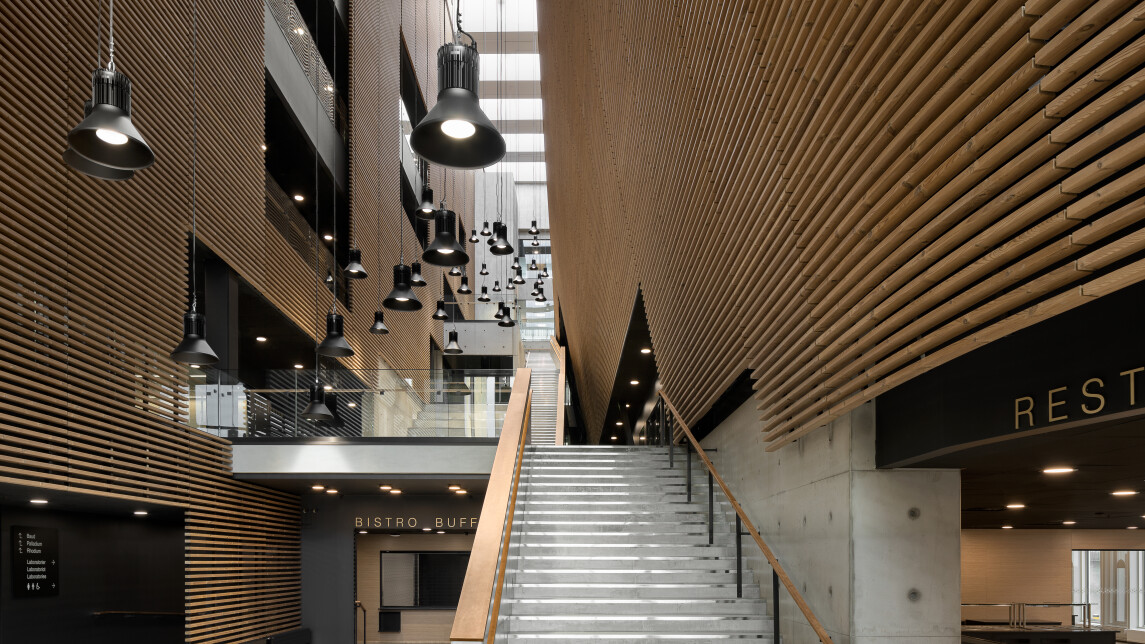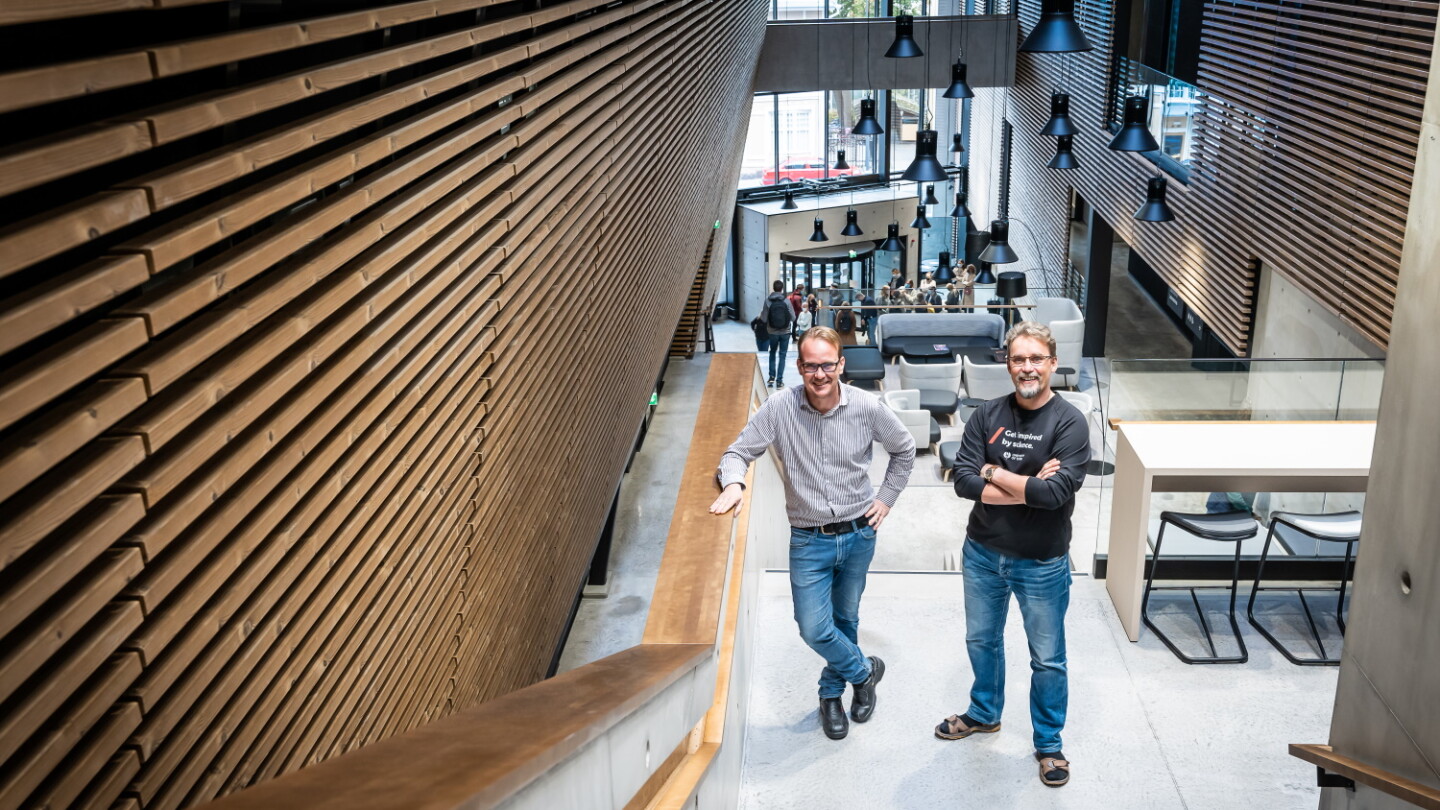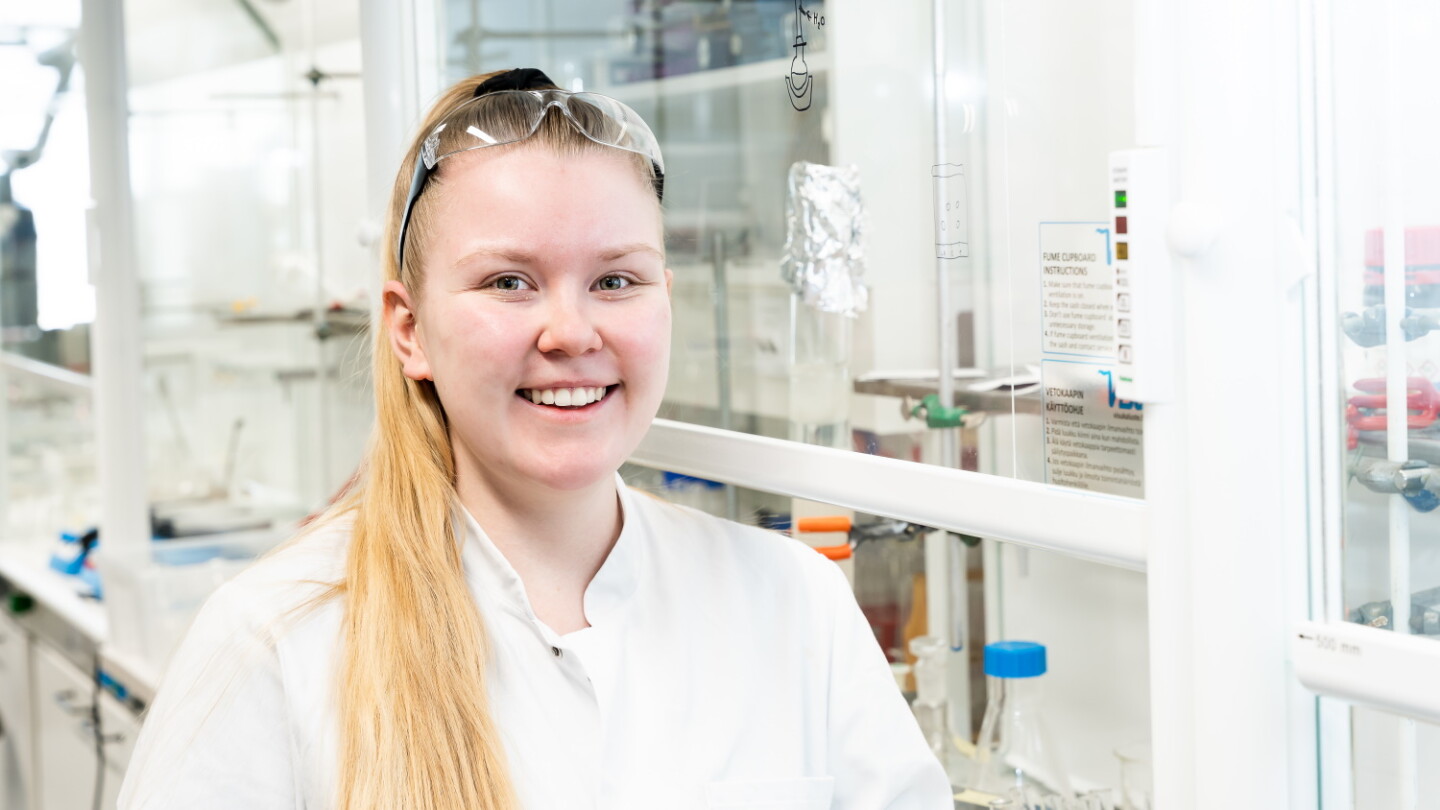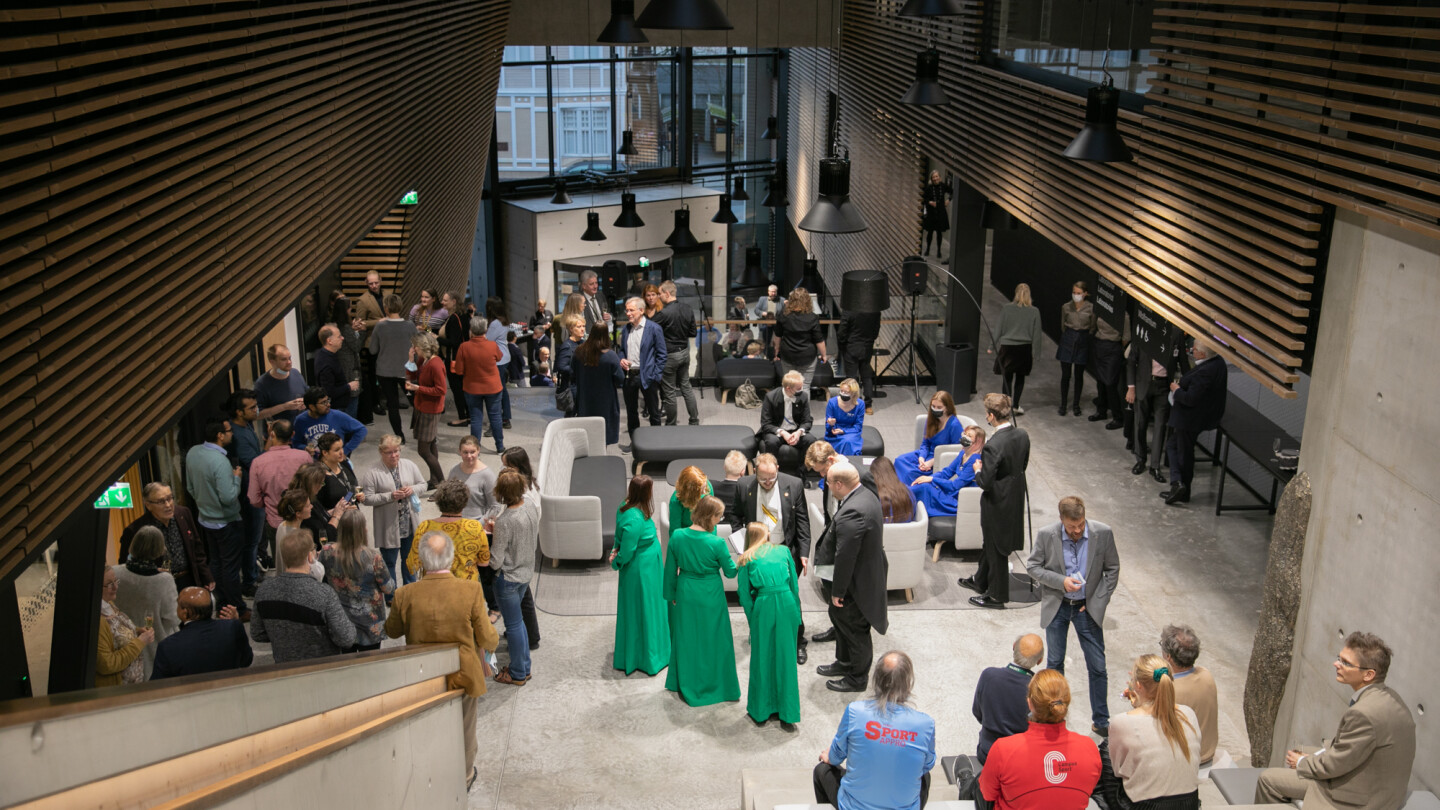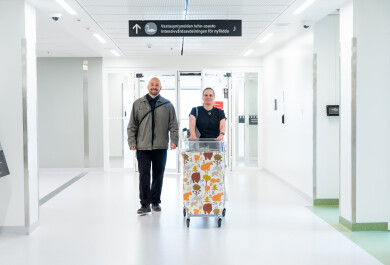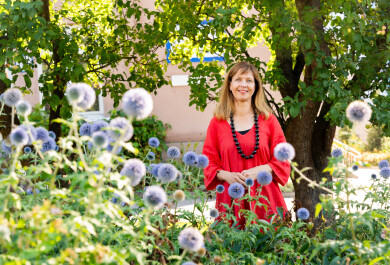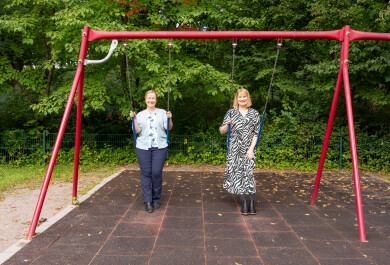The new Aurum building of the University of Turku and Åbo Akademi University on the University Hill has been completed. The significant chemistry cluster in Aurum promotes collaboration in research and teaching and, at the same time, the boost to the industry benefits the regional partners.
The University of Turku and Åbo Akademi University have a long history in research and education collaboration. Especially the Scientia Aboensis project has supported collaboration natural sciences and engineering by promoting several joint research and education infrastructures, teaching, and shared facilities. As a result of this collaboration, a new joint chemistry building, Aurum, has been completed on campus.
Aurum’s 20,000 square metres and six floors offer facilities for the Faculty of Science and Engineering of the Åbo Akademi University, and the Department of Chemistry, the Biodiversity Unit’s Aerobiology Laboratory, and the Library of the University of Turku. The building also houses a shared Analytics Centre, a Kårkafé restaurant, and CampusSport sports facilities. A third of the building’s area consists of laboratories for education and research purposes.
– We can strengthen the universities’ collaboration particularly in chemistry and create a significant chemistry cluster in Aurum. Now, we can bring together the experts and infrastructures of both universities and can benefit from each others’ special expertise even better, says the Head of the Department of Chemistry Pasi Virta.
Openness Advances Research
Aurum, which is located in the heart of University Hill, further promotes the cluster of natural sciences and engineering that has been created in the area.
– After thirty years, chemistry is back on the University Hill with the rest of the Faculty of Science. This has a great significance for the community and encourages even more active collaboration, states Virta.
The main focuses for research and education in chemistry at the University of Turku are sustainable materials and drug development. Interdisciplinary research collaboration is conducted actively in both areas.
– We have consciously developed our focus areas to correspond to the great challenges of our time. Through our research, we can help to find solutions to global problems, says Vice Dean Juha-Pekka Salminen of the Faculty of Science.
Salminen and Virta agree that, in general, the significance of chemistry has become more widely recognised.
– The research in the discipline can have a great impact. For instance, it would not have been possible to develop coronavirus vaccinations so quickly without the breakthroughs in nucleic acid studies, Virta mentions as an example.
– The research we have conducted in collaboration has resulted in significant innovations. We participate in multidisciplinary projects that aim to create new ways to reduce carbon dioxide in the atmosphere, more efficient solar energy production, novel biomolecular drugs, smart photon materials, and preventing biodiversity loss, to name a few. Chemistry has a lot to give and we should share our expertise, says Salminen.
The research facilities of the University’s Department of Chemistry are located at the top floor of Aurum with views spreading out towards the University Hill and the historic cathedral area. A special feature in Aurum’s architecture is the open and light spaces with large windows. A considerable part of the office space is open plan. Even the laboratories are large and open spaces in joint use.
– At Aurum, our Department uses one large research laboratory, which is a great change for us. In a new work environment, we have to learn new working methods and culture, but at the same time we can more easily share our expertise and ideas in a completely new way. The interaction and openness between our research groups will increase, which is most welcome, reflects Virta.
Salminen also highlights the significance of spontaneous meetings as a strength that promotes research.
– At Aurum, we meet each other in an entirely new way. Here, the research groups are close to each other as well as to the Faculty and Åbo Akademi University researchers. The possibilities for discussions and networking increase. Research collaboration wit Åbo Akademi University and other units is developed systematically, but at its best the increase in everyday encounters can create new perspectives into research, says Salminen.
Analytics Centre Invests in Shared Top Infrastructure – Research Services Offered Also to Companies
The shared Chemical and Molecular Analytics Centre of the University of Turku and Åbo Akademi University has maintained the universities’ joint equipment infrastructure and offered research services in chemistry for many decades.
With the move to Aurum, the use of shared equipment will become more efficient. Furthermore, it is possible to further expand the universities’ top research infrastructure.
– We have already started procuring new equipment. However, top-level infrastructure is not a value in itself and the equipment is of no use without experts. The use of the equipment always requires specialised expertise. In addition to new equipment, we have to build effective research services around the infrastructure, Salminen highlights.
For example, one challenge related to the infrastructure has been that different units and organisations are not always aware what kind of equipment others already possess. Sometimes, units can procure same equipment or seek services elsewhere unnecessarily.
Salminen emphasises that the development of an effective infrastructure requires active discussion both at the universities and with the companies seeking research services.
–We are actively developing the infrastructure and expert services of the Analytics Centre so that we at the same time take into consideration as extensively as possible the research needs of both universities as well as those of the surrounding society. Many businesses in the region already use our services and new collaboration is developed continuously, says Salminen.
According to Salminen, everyone benefits of the shared infrastructure.
– When we can avoid overlapping expensive equipment procurements and increase the use of the existing equipment, we can recruit new experts, develop even more specific research services, and, in the end, invest in an even more versatile selection of infrastructure.
Salminen sees that increasing collaboration even on a national level is sensible.
– One of our goals in the Analytics Centre here at Turku is to specialise and invest in infrastructure which cannot be found in any other university in Finland. This way, we can also increase national collaboration. For example, large molecule bioanalysis in drug development is one of our specialities and we are further developing the suitable infrastructure, describes Salminen.
Excellent Learning Environments and Shared Courses
The coronavirus transferred most of the University’s teaching online. Virta says that, once the restrictions are lifted, contact teaching is again organised as much as possible. Especially laboratory training cannot be replaced with remote teaching.
In their first two years of study, the students of both universities practice the basics of laboratory work in the second floor teaching laboratories at Aurum. Already in their third year, the students move to the research laboratories and the assignments are conducted as part of a research group.
– Our students need enough laboratory training at every stage of their studies in order to gain the necessary skills for professional life. At Aurum, the study environments and settings for laboratory training are excellent, says Virta.
Working with the research groups develops the students’ professional skills. At the same time, it helps them to select their field of specialisation towards the end of their studies.
– Our students are introduced to current research topics early on and they receive practice assignments that are relevant to the research project. In the new shared research laboratories, the students are introduced to the work of several research groups at the same time. This way, the students’ acquire an extensive skill set and they can more easily identify the research topics that interest them, describes Salminen.
Third-year chemistry student Henna Isokorpi has just started her Bachelor’s thesis assignment in the research group for bioorganic chemistry.
– I have been interested in drug development chemistry since the beginning of my studies and it is great that I can do my Bachelor’s thesis in this group. I’m aiming for a career in drug development after I graduate, says Isokorpi.
It has been possible to take courses from other universities and higher education institutions with the flexible study right. Virta and Salminen believe that with the joint facilities the threshold for participating in the neighbour university's courses lowers naturally. It is also planned that the number of shared courses in the Master’s degree studies are increased.
– The move to Aurum has piqued my interest in completing courses at Åbo Akademi University and I will look into different study opportunities. It’s also great that the facilities of both universities’ student organisations are right next to each other at Aurum. I can’t wait to get to know the Åbo Akademi students better, Says Isokorpi happily.
Focus on Sustainability
The design of the building has from the start been guided by the thought of Aurum and its lobby as a meeting place on campus. The lobby is six floors high and visually impressive, the skylights let in light, and different kinds of areas and lounges invite people to stop and spend time in the space.
In addition, one of the central criteria in the building design has been environmental sustainability. Environmental efficiency has been taken into account in all solutions at Aurum, such as in the materials and use of space. Solar panels have been installed on the building’s roof and geothermal energy is used in heating and cooling.
Aurum has also received a BREEAM environmental certificate with the classification Excellent in the development phase as a first campus building in Finland.
Text: Liisa Reunanen
Photos: Hanna Oksanen adn Suvi Harvisalo
Translation: Mari Ratia
